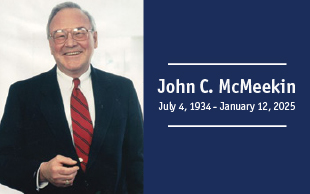![]() How did
How did
Forensic Services start?
![]() Deborah Schlater: Forensic Services started as an early parole program
for people in the Philadelphia jails. It was created because the county
jail was overcrowded and the city was getting fined for overcrowding.
Those fines provided the program’s first funding.
Deborah Schlater: Forensic Services started as an early parole program
for people in the Philadelphia jails. It was created because the county
jail was overcrowded and the city was getting fined for overcrowding.
Those fines provided the program’s first funding.
![]() How do you
How do you
reach possible participants?
![]() DS: We work closely with the district attorney’s office, defenders
association, court system and probation department to identify people
who are legally eligible for parole. We go behind the wall and do a
clinical assessment to determine whether treatment is needed. We send
that information back to the public defender for approval.
DS: We work closely with the district attorney’s office, defenders
association, court system and probation department to identify people
who are legally eligible for parole. We go behind the wall and do a
clinical assessment to determine whether treatment is needed. We send
that information back to the public defender for approval.
![]() Who is an ideal candidate
Who is an ideal candidate
for the program?
![]() DS: They are people in the Philadelphia prison system usually for drug
crimes. They have to be under a sentence of no more than two years, for
nonviolent crimes. Once participants serve half of their minimum
sentences without incident, they are legally eligible for early parol
DS: They are people in the Philadelphia prison system usually for drug
crimes. They have to be under a sentence of no more than two years, for
nonviolent crimes. Once participants serve half of their minimum
sentences without incident, they are legally eligible for early parol
![]() How many candidates can be found
How many candidates can be found
in Philadelphia prisons?
![]() DS: About 75% of the prison population is clinically eligible, that is they suffer from substance abuse.
DS: About 75% of the prison population is clinically eligible, that is they suffer from substance abuse.
![]() And of that population,
And of that population,
how many participants are chosen?
![]() DS: Our Forensic Intensive Recovery [FIR] caseload is currently about 750
people who have either earned early parole or have been diverted from
jail; in addition we currently serve 1,300-plus participants in all of
the Criminal Justice Treatment Initiatives [CJTI] combined.
DS: Our Forensic Intensive Recovery [FIR] caseload is currently about 750
people who have either earned early parole or have been diverted from
jail; in addition we currently serve 1,300-plus participants in all of
the Criminal Justice Treatment Initiatives [CJTI] combined.
![]() What happens once
What happens once
participants are clean?
![]() DS: We enlist them in vocational training programs, housing, GED programs,
enrolment in community college. There are a lot of options and we
support whatever kind of reentry service the case manager recommends.
DS: We enlist them in vocational training programs, housing, GED programs,
enrolment in community college. There are a lot of options and we
support whatever kind of reentry service the case manager recommends.
![]() What kind of results do you see for participants compared to those not taking part in the program?
What kind of results do you see for participants compared to those not taking part in the program?
![]() DS: Based on an evaluation in the mid-1990s, those people who completed 6 months of substance abuse treatment are 66% less likely to be convicted of a new crime. Newer data suggests that we are seeing similar if not better results today.
DS: Based on an evaluation in the mid-1990s, those people who completed 6 months of substance abuse treatment are 66% less likely to be convicted of a new crime. Newer data suggests that we are seeing similar if not better results today.
Amy Augustine: Another CJTI, the Philadelphia Treatment Court, targets first- time offenders. The program takes anywhere from 12 to 15 months to complete. The goal at successful completion is to withdraw the case and eventually have the client’s record expunged. 90% of the participants graduate and of those about 70% have their records expunged.
![]() What kind of reaction are you seeing from the legal and surrounding communities?
What kind of reaction are you seeing from the legal and surrounding communities?
![]() AA: The criminal justice system values
AA: The criminal justice system values
our programs and over the last 10
years communities have become more receptive to treatment-based
alternative programs versus incarceration.
![]()
Why the support?
![]() AA: Participants are getting the treatment they need, an improvement over
traditional sentences such as incarceration and probation. There is
confidence that clients are getting services they require, in order to
lead crime- and drug-free lives. We address the problem-causing
behaviors and that is what judges like. Essentially there is a sense
that if you treat the root cause of the problem, you will see less
recidivism.
AA: Participants are getting the treatment they need, an improvement over
traditional sentences such as incarceration and probation. There is
confidence that clients are getting services they require, in order to
lead crime- and drug-free lives. We address the problem-causing
behaviors and that is what judges like. Essentially there is a sense
that if you treat the root cause of the problem, you will see less
recidivism.





